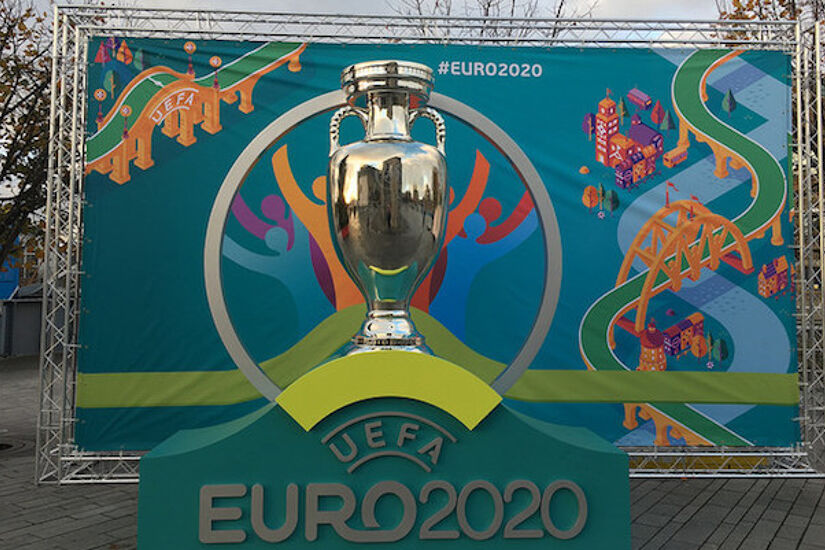EURO 2020 draw explainer

Credit: Macdara Ferris (ETPhotos)
If the Republic of Ireland’s UEFA Nations League was pretty poor precipitating the departure of Martin O'Neill, Northern Ireland manager Michael O’Neill was joking after his team’s fourth defeat from four that his team needed to now "forget the Nations League was ever invented and go and be ready to play in March."
So let us put the UEFA Nations League quickly behind us and focus firmly on EURO 2020 qualification which begins with the first qualifiers on 21 March 2019. The draw for the qualification process takes place in Dublin on Sunday week, with the great and good of UEFA coming to the Convention Centre in Dublin.
The draw and qualifcation process
The 55 teams will be drawn from seven pots based on the overall UEFA Nations League ranking after the conclusion of the group stages this week.
The tournament will be played in June and July 2020 across a dozen European host cities but each host country still needs to qualify. Dublin will host three group matches and one last 16 match.
Should we make it, we will play two of our three group games at the Aviva. Dublin has been twinned with Bilbao for those finals so if Ireland qualify we will be in the same group as Spain should they make the finals.
The European Qualifiers run from March to November 2019 with the top two in each of the ten qualifying groups automatically making the tournament. There is no play-off available for third place teams like in qualification for Russia 2018.
The 20 automatic qualifiers through the groups will be joined by four more teams who will win their berth at EURO 2020 through the UEFA Nations League play-offs that take place in March 2020. Ireland still might get a shot at those playoffs depending on how teams get on in the Euro qualifiers.
Seedings
After Tuesday night’s final UEFA Nations League matches, the seedings for the draw have been confirmed.
UNL Pot: England, Netherlands, Portugal and Switzerland
Pot 1: Belgium, Croatia, France, Italy, Poland and Spain.
Pot 2: Austria, Bosnia-Herzegovina, Czech Republic, Denmark, Germany, Iceland, Russia, Sweden. Ukraine and Wales,
Pot 3: Bulgaria, Finland, Israel, Northern Ireland, Norway, Republic of Ireland,Scotland, Serbia, Slovakia and Turkey
Pot 4: Albania, Cyprus, Estonia, Georgia, Greece, Hungary, Lithuania, Montenegro, Romania and Slovenia.
Pot 5: Armenia, Azerbaijan, Belarus, Faroe Islands, Gibraltar, Kazakhstan, Kosovo, Luxembourg, Macedonia and Moldova,
Pot 6: Andorra, Latvia, Liechtenstein, Malta Sand an Marino
Feel free to pick your dream or nightmare draw from the above – France, Germany, Hungary, Macedonia and Latvia anyone – and yes we can still draw Denmark but we will avoid another MON derby as Northern Ireland like the Republic of Ireland are both third seeds and can’t be drawn against one another.
Complications
Competition-related reasons, politics, weather and geographic reasons all add some complications to the draw. Firstly a maximum of two host countries can be drawn in the same group.
The ten groups will be split with five groups having five teams and the remaining groups being made up with six teams in each.
Ahead of the draw, the teams have been split into seven pots, with one of the pots containing the four teams from League A who have made the UEFA Nations League final tournament in June 2019 which will take place during qualification match dates. So for that reason to facilitate the four teams in that Nations League final, they will be placed in groups with five teams.
Prohibited team clashes
The prohibited team clash rules mean that the following countries cannot be drawn in the same group:
- Armenia / Azerbaijan
- Gibraltar / Spain
- Kosovo / Bosnia-Herzegovina
- Kosovo / Serbia
- Ukraine / Russia
We should probably lobby for Republic of Ireland / Denmark to be added into this list as many football fans couldn’t face that clash again.
Winter Venue restrictions
Certain countries have been identified as venues with high or medium risk of severe winter conditions and so to minimise the risk of matches being negatively affected or even not being completed or played, a maximum of two such countries can be drawn into the same group:
Belarus, Estonia, Faroe Islands, Finland, Iceland, Latvia, Lithuania, Norway, Russia and Ukraine
Excessive travel restrictions
UEFA have also identified certain teams with excessive travel distance in relation to each other. To lessen the travel burden, a maximum of one such pair can be drawn into the same group. The following shows the restrictions, applicable both ways:
To/From Kazakhstan with Andorra (Barcelona), England, France, Faroe Islands, Gibraltar, Iceland, Malta, Northern Ireland, Portugal, Republic of Ireland, Scotland, Spain and Wales.
It is a similar situation to and from Azerbaijan with Gibraltar, Iceland and Portugal plus to and from Iceland and Armenia, Cyprus, Georgia and Israel.
The host cities
A reminder that there are 12 host cities for the tournament:
Final and semi-finals, one round of 16 game, three group games
London, England: Wembley Stadium
Three group games, one quarter-final
Baku, Azerbaijan: Olympic Stadium
Munich, Germany: Football Arena Munich
Rome, Italy: Stadio Olimpico
Saint Petersburg, Russia: Saint Petersburg
Three group games, one round of 16 game
Amsterdam, Netherlands: Johan Cruijff ArenA
Bilbao, Spain: San Mamés Stadium
Bucharest, Romania: National Arena
Budapest, Hungary: Puskás Ferenc Stadium
Copenhagen, Denmark: Parken Stadium
Dublin, Republic of Ireland: Dublin Arena
Glasgow, Scotland: Hampden Park
FINALISTS
— UEFA Nations League (@UEFAEURO) November 20, 2018
Portugal
England
Switzerland
Netherlands
B GROUP WINNERS
Ukraine
Sweden
Bosnia & Herzegovina
Denmark
C GROUP WINNERS
Scotland
Finland
Norway
Serbia
D GROUP WINNERS
Georgia
Belarus
Kosovo
FYR Macedonia#NationsLeaguepic.twitter.com/cA1pM9uAKG

